How to Bleach Wood
Bleaching wood is an inexpensive and easy way to brighten up wood without covering up that beautiful grain. Here’s how to bleach wood!
Get more great refinishing furniture ideas here!

I snagged a pair of these nightstands off of Facebook Marketplace for an unbeatable price but wasn’t crazy about how heavy-duty they looked.
They were thicc gals! (Yes, with a double cc, as the teens these days say.) So I really wanted to take off some of the weight (not literally) and brighten them up a bit.
Paint alone is always a great option, but I was dying to keep some warm wood tones in the mix.
There are fancy wood bleaching kits made by Zinsser and probably other well-known brands, but you can make homemade wood bleach with products you likely already have around your home!
Do you have a piece of furniture or maybe some old picture frames that are begging for a fresher, lighter bleached wood look?
Supplies Used for DIY Bleached Wood Furniture
As an Amazon Associate, I earn from qualifying purchases. I also may earn from other qualifying purchases with other companies or get free product to review and use. All opinions are my own.
- Rag (I used an old T-shirt)
- Cleaning product (I used Krud Kutter. Dawn dish soap would also work)
- Tack Cloth (optional)
- 80 Grit Sandpaper
- 120 Grit Sandpaper
- Sanding Star to Sand Table Legs
- Plastic Cup or Small Container
- Household Bleach
- Water
- Chip Brush
- Vinegar
- Trewax
Cleaning and Sanding Wood Furniture
You never know where your furniture has been. So step one – ALWAYS – is to clean your piece! I love Krud Kutter and old T-shirts for this first, essential step.
Dawn dish soap and water can also be a great degreaser. When I use Dawn I simply fill an old bowl with soapy water, dip an old T-shirt in the water, wring out and wipe down outdoors.
Check out this post to learn more about how to clean furniture before painting.
After you have it squeaky clean and dry, now it’s sanding time! Learn all about how to prep furniture for painting here.
This will require more than a scuff sand to get down to the raw wood. So grab your gumption and 80 grit sandpaper! Once you get the majority of the old finish off, move to a 120 grit sheet.
I personally wouldn’t go much higher than 120. In theory, you want the grain of the wood to still be open enough to soak in the bleach. Learn more about sandpaper for furniture painting here.
If you are sanding table legs, or anything with curved edges – like the legs on these nightstands – I highly recommend a sanding star.
It’s a life-saving tool that easily attaches to any standard drill and will save your fingerprints.
After it’s sanded and smooth, wipe the piece down with the rag with leftover Krud Kutter or Dawn mixture.
I followed with a tack cloth to get every last speck of dust, though a dustless environment is not as crucial here as in a painting situation.
How to Bleach Wood Furniture
I promise the hardest part is now over! Once all your dust is cleaned up you’re ready to mix your bleach solution and paint it on.
Mix together 1 part bleach to 1 part water in literally any container that you have sitting around. (I used a very fancy mixing cup – a plastic cup from a dollar store pack).

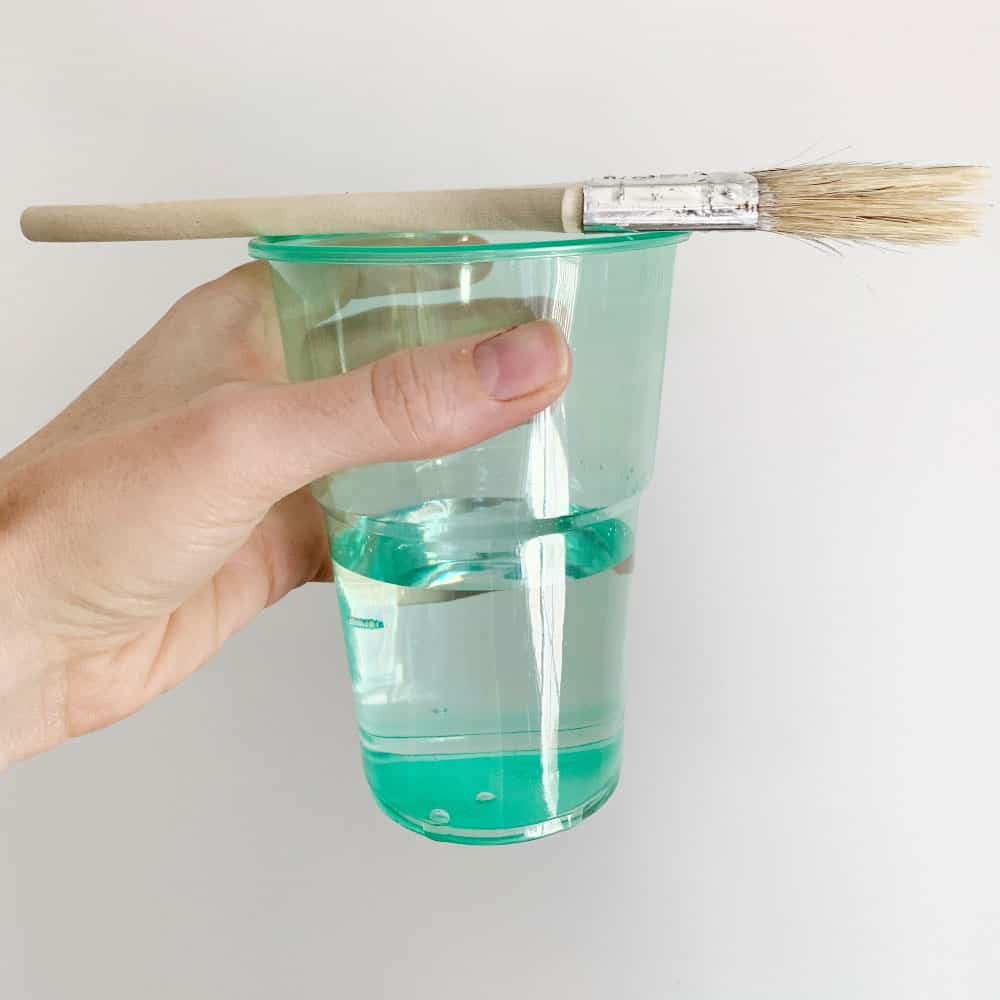
Using your chip brush, paint your bleach solution over the wood you want to transform. Allow it to dry in the sun (about 15 mins). The sunnier the day the better!
*** CAUTION: Be careful not to let the bleach mixture pool/drip or you’ll get splotches (see picture below).

To avoid this, I recommend applying to upright furniture. These splotches occurred because I applied the bleach while the table was laying on its side.
If this happens to you, don’t fret, just sand them out and reapply your bleach.
Easy! Once your homemade wood bleach has dried just reapply your bleach solution and let dry in the sun, again.
You may be satisfied with 1-2 coats, but if you’re working with something like mahogany you may need 4+ coats.
It just depends on the species of wood you start with and the end goal you have in mind. Keep in mind, each type of wood likely has its bleaching limits.
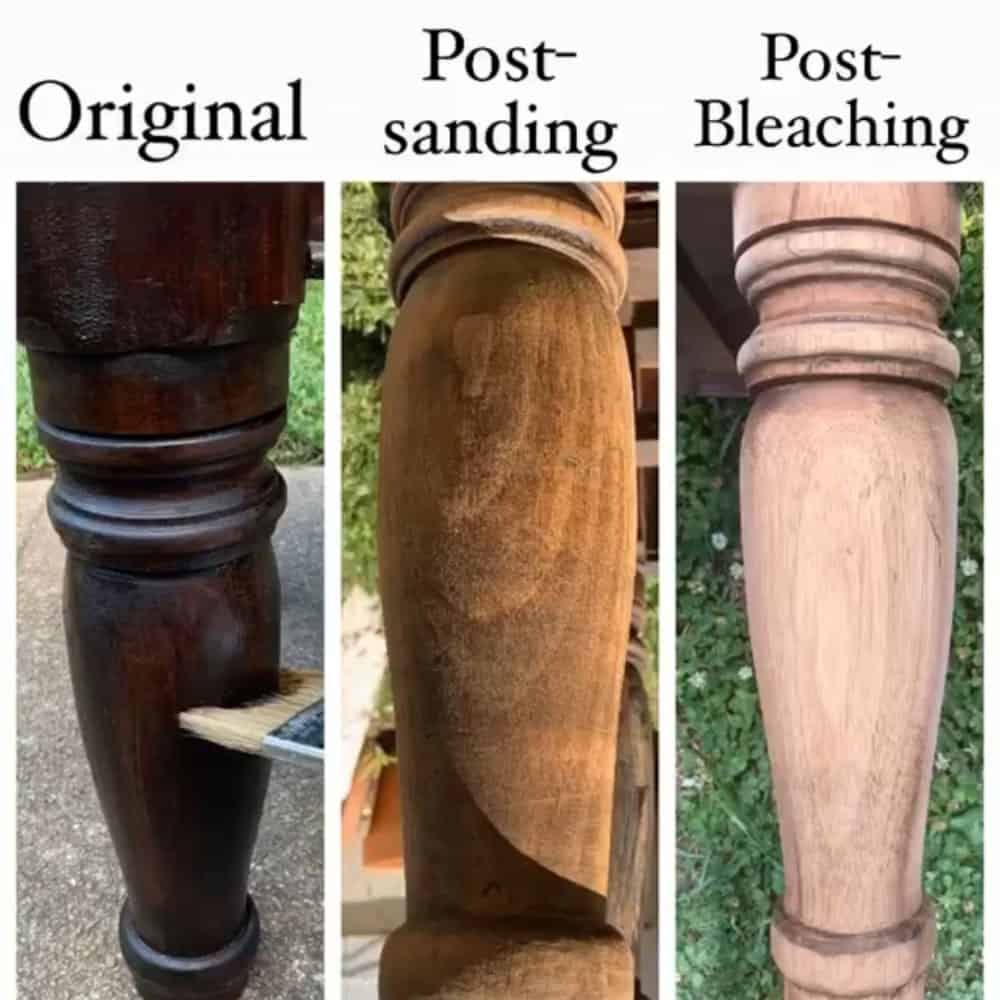
How to Neutralize Bleached Wood
Once your last coat of bleach has dried and you are satisfied with the tone of the wood it’s time to neutralize.
Take a rag and household vinegar and give the piece a good wipe down. This will neutralize the basicness of the bleach.

Sealing Bleached Wood
Grab your favorite topcoat and seal in that newly brightened wood grain.
I was nervous to use anything that may darken the grain (such as oils or poly), so I chose my favorite Trewax which I applied with an old sock.
It did darken the wood just a smidge but didn’t take away from my bleaching work. Learn more about topcoats for painting furniture here.
How easy and inexpensive was that? It’s a totally achievable weekend project that you can accomplish with products you probably already have laying around.
This process would be a great way to brighten up a space on a smaller scale too with picture frames or wooden trays, etc.
Painting the Nightstands
I painted the tops of these nightstands in a gray/blue color. I loved how the cool blue balanced out the warm wood tones. Check out more French blue painted furniture here.
Once my paint was dry, I applied 3 coats of poly to the painted portion only. Learn more about how to apply polycrylic to painted furniture here and how to spray polyurethane here.
For the final finishing touch, I added new black knobs that I purchased at Home Depot.
If you like this look and wondering is two-toned furniture in style, check out this post to find out.
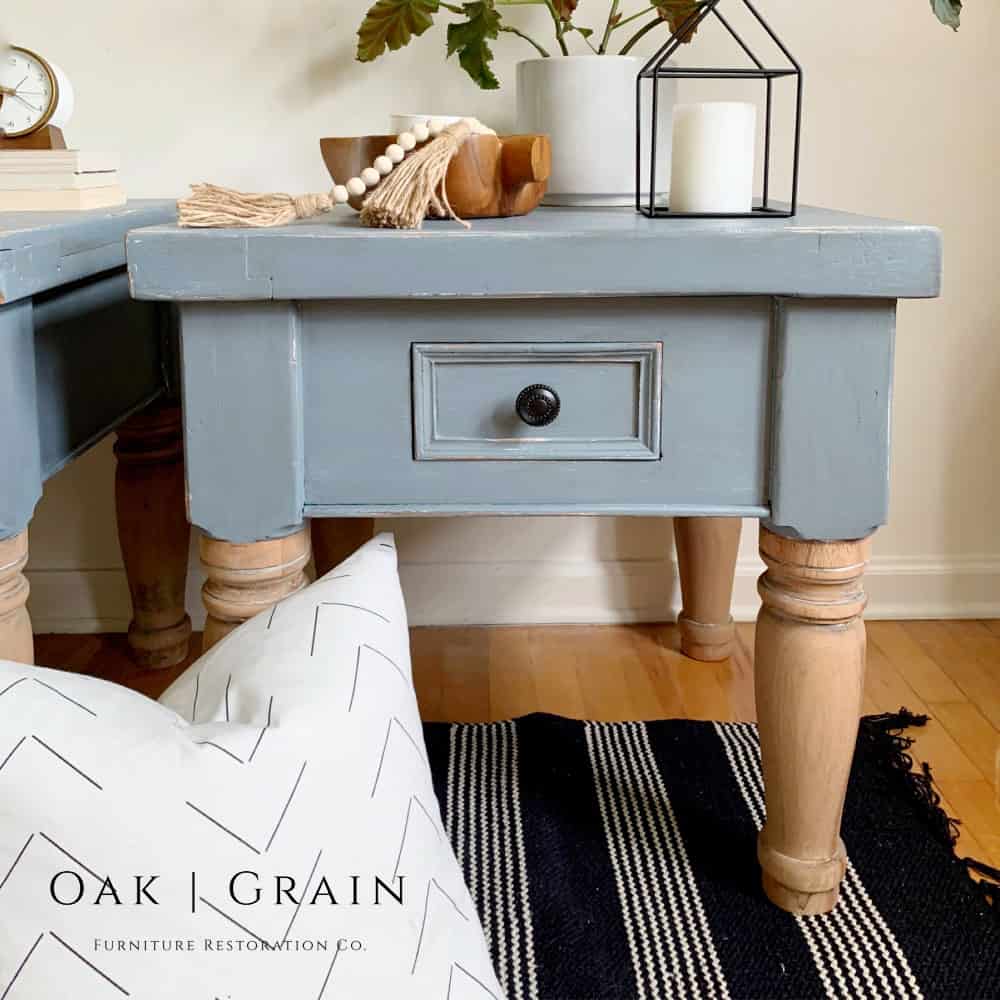
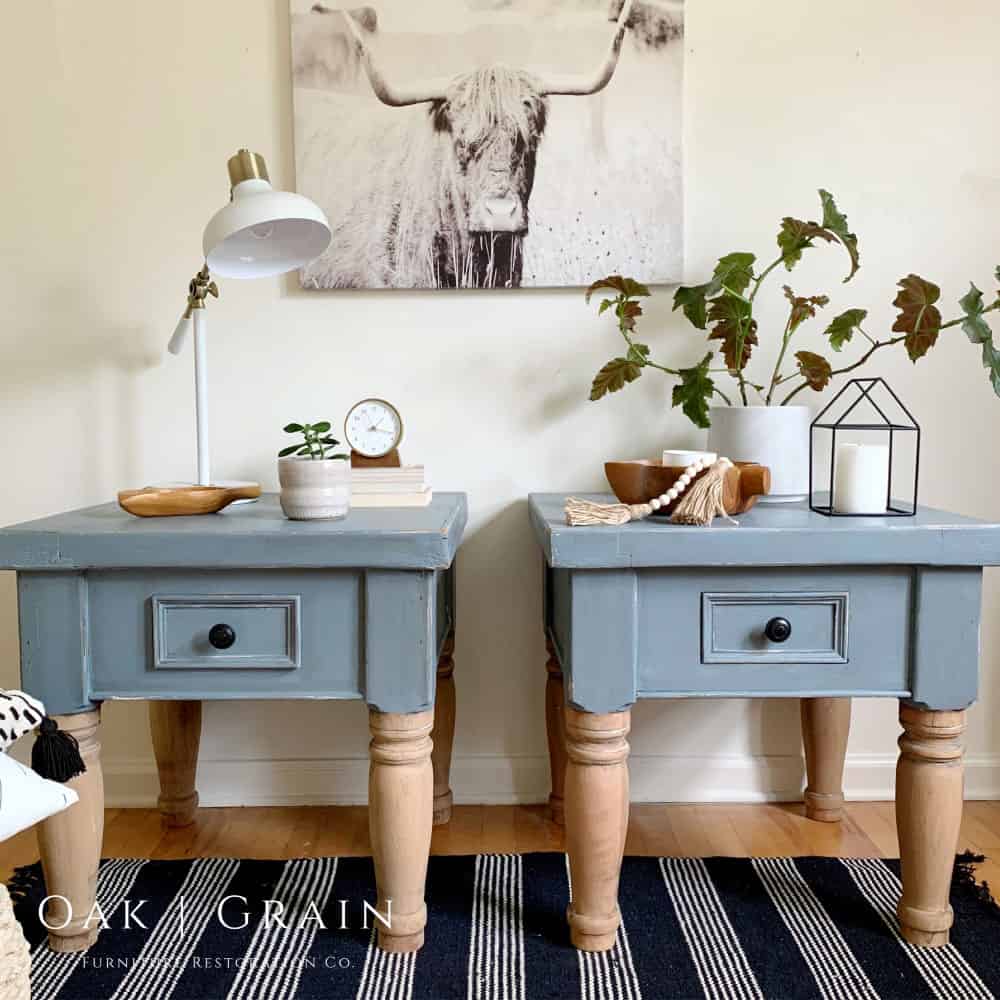
More Before And After Makeovers
Click any of these “before” photos below to view the “after” of that makeover.
I allowed my poly to dry for 24 hours before staging. But keep in mind it takes 28 days for paint/poly to fully cure before it’s ready for heavier use.
This makeover was created by Jess with Oak and Grain Restoration. She currently lives in North Carolina where she works full-time in an emergency room. She loves dipping into her creative side by transforming furniture and in the process, keeping her sanity.
Follow her on Instagram to see more action behind the scenes!!
More Refinishing Furniture Resources
- Furniture Refinishing Tools
- How to Whitewash Furniture
- How to Whitewash Wood
- Best Wood Stains
- Refinishing an Old Dresser
Follow us on YouTube to get more tips for painting furniture.
Or share your project with us on our Facebook Group and be part of our community. See you there!






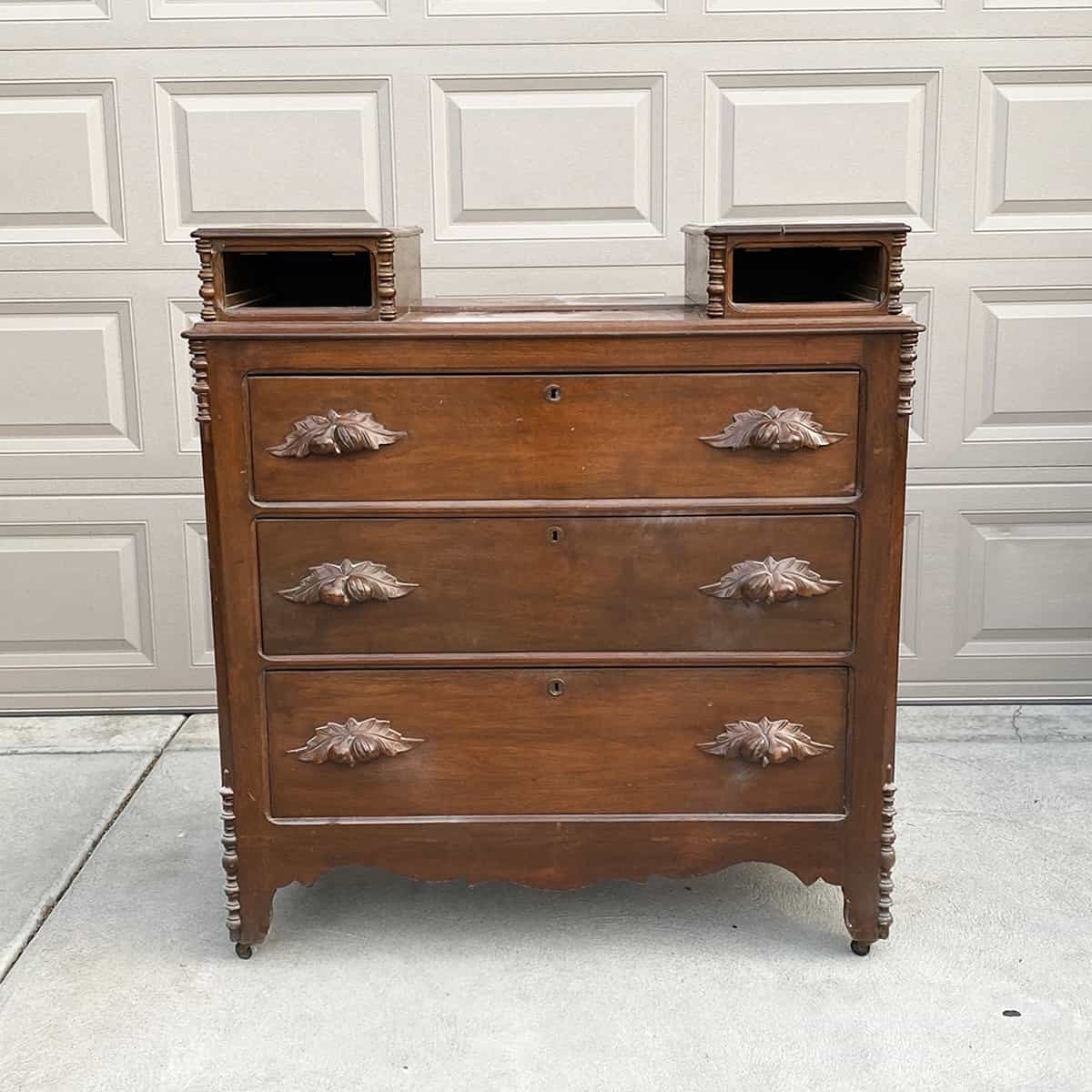

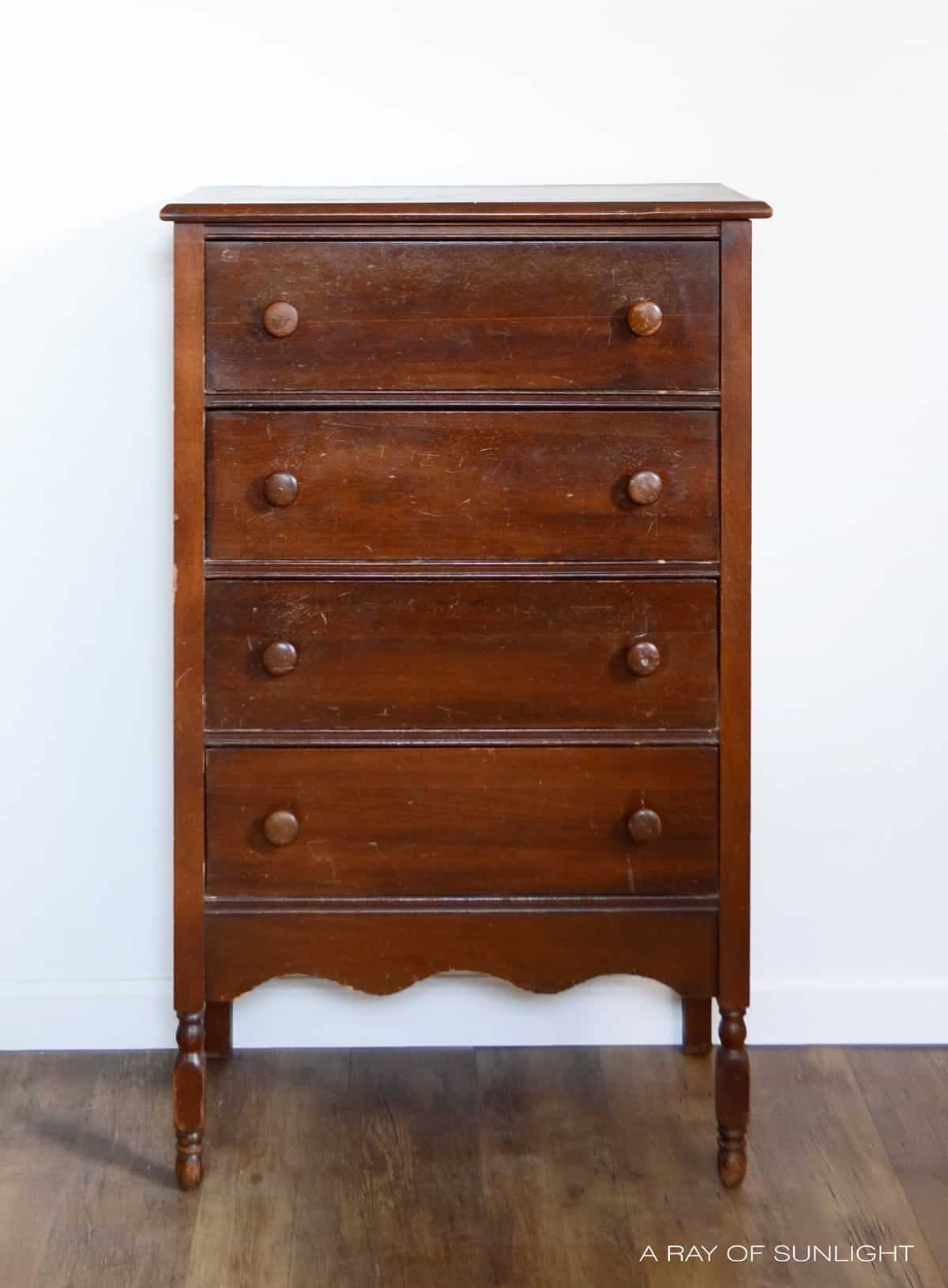
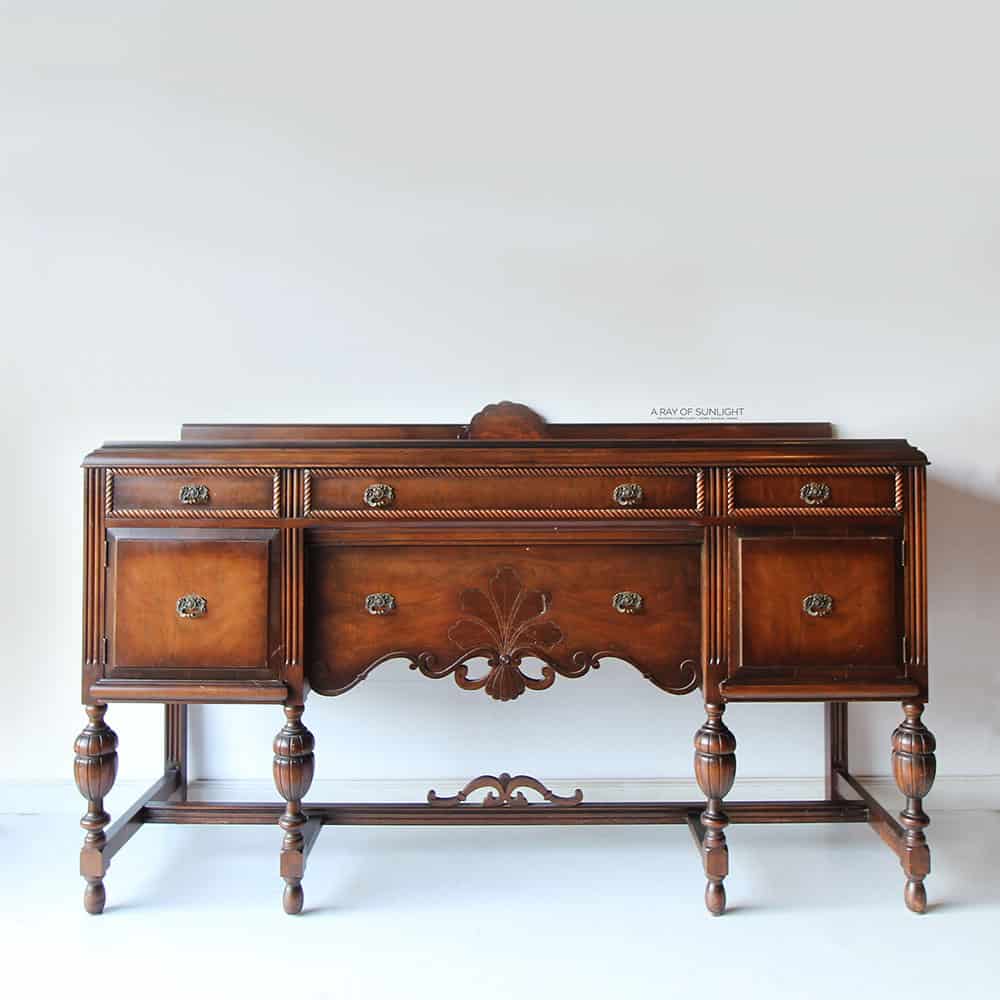
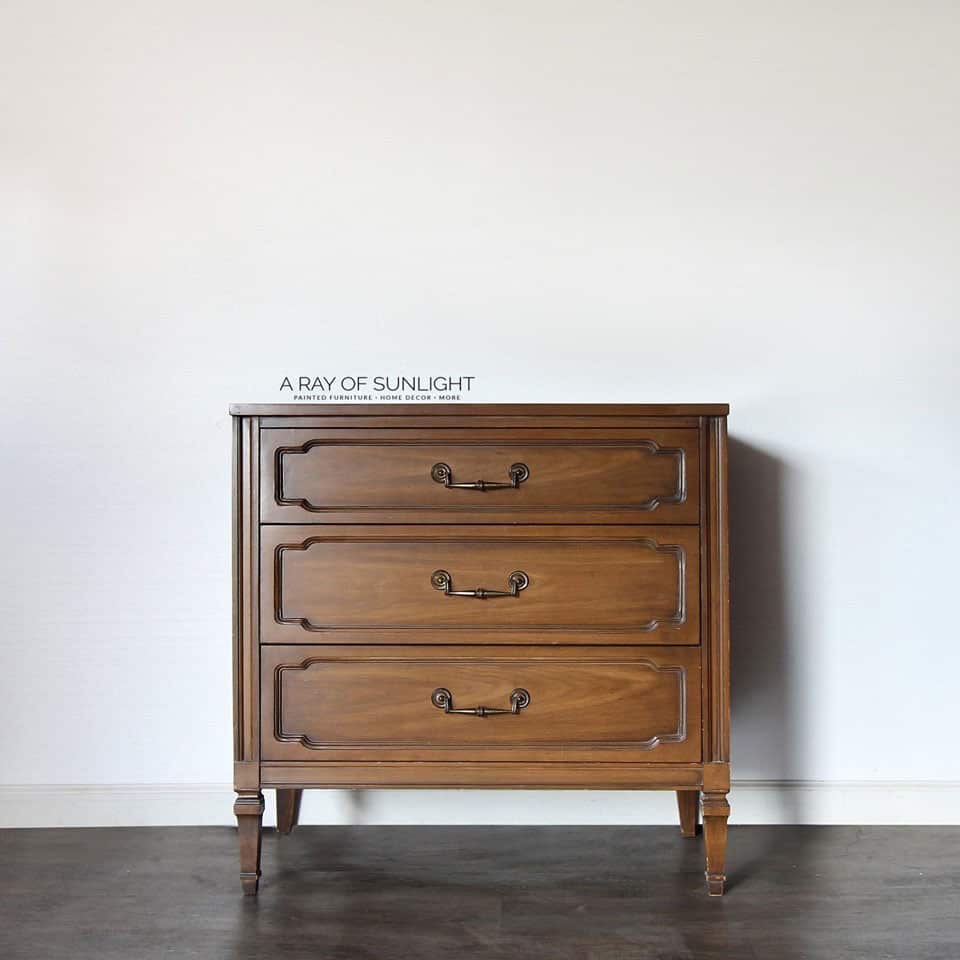


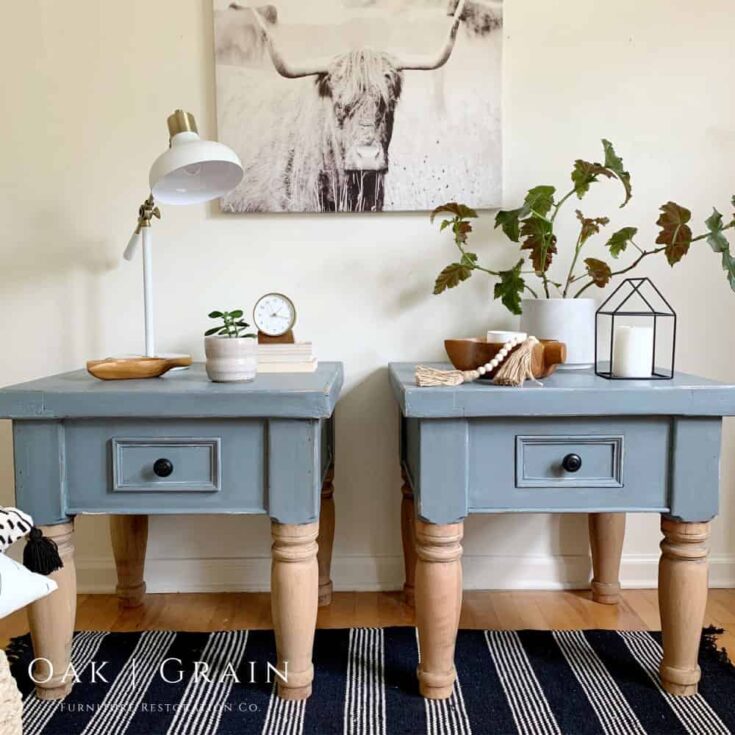



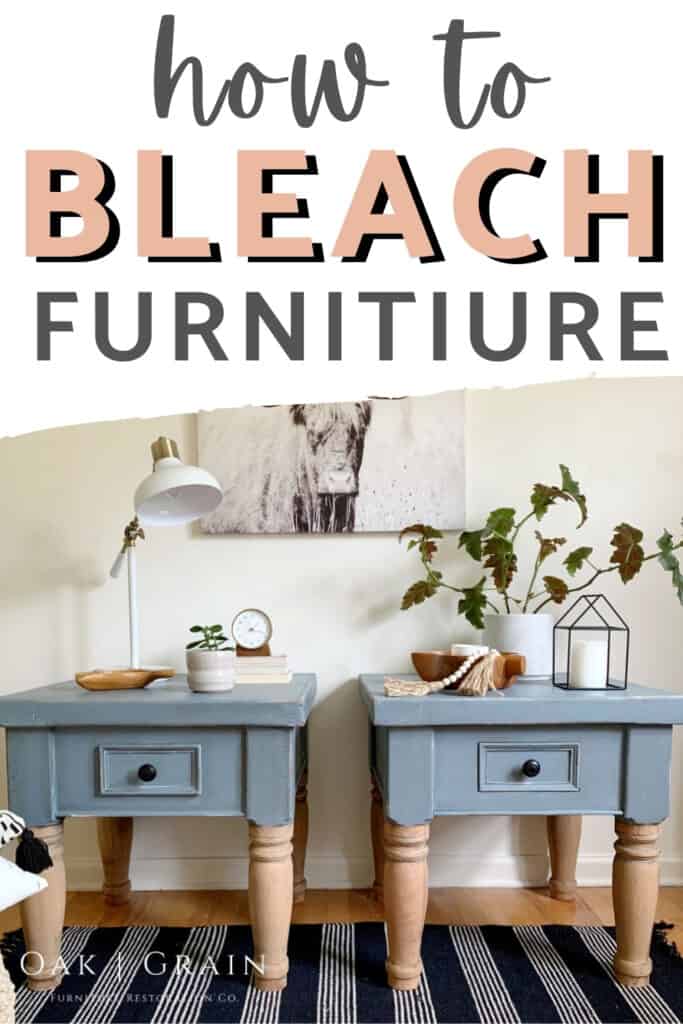
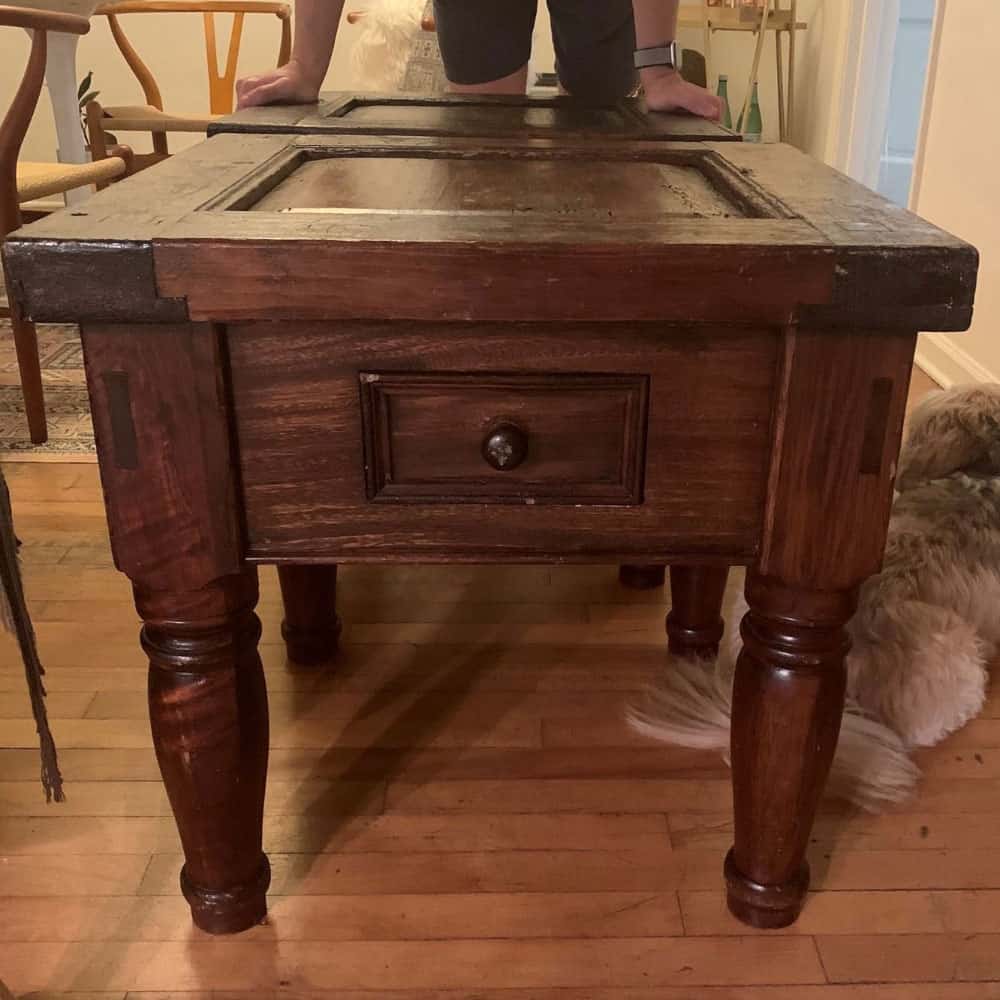
So cute! I can’t wait to try this!
Oh awesome! Yes, bleaching it should help take away the yellow tone.
I’d love to see your project over on our facebook page once it’s done!
I don’t want to sound stupid, but I can’t get my furniture outside. It’s too big and heavy, and it’s just me here. Is there a way to bleach wood without the sun?
Yep! You can do it inside without the sun. Just make sure you have all your windows open to ventilate the smell of bleach.